Мы продолжаем напряженно работать, чтобы улучшить наш сайт и перевести его на другие языки. Русская версия этой страницы еще не совсем готова. Поэтому мы представляем здесь пока английскую версию. Мы благодарим вас за понимание.
Мастер
Context
The master is a writer who, in the time of Joseph Stalin (1878-1953), wrote a novel about Pontius Pilate (?-39), the Roman prefect in Judea who, according to the Christian gospels, confirmed the death sentence of Jesus of Nazareth (0-33). In the atheist Soviet Union of the time, it was a forbidden subject, so the master was heavily criticized in the press, although his novel had never been published. He is arrested and sent to the psychiatric hospital of doctor Stravinsky, where he meets the poet Ivan Bezdomny.
Before his internment, the master had been so struck by the accusations that he got fits of madness and denied his own identity. «У меня нет больше фамилии» or «I no longer have a name», he says to the poet when he tells his story. He was once a historian - the same profession that Ivan would have at the end of the novel - but when he won a large sum of money in a lottery, he left his job to work on his book. One day, he met Margarita, whom he hopelessly fell in love with. When he wanted to burn his book, Margarita saved a piece of it and kept it.
In the hospital, the master has stolen keys with which he could escape, but he doesn't, because he has «nowhere to escape to». Meanwhile, Margarita, without news of the master's whereabouts, helped the devil Woland with his annual ball and, as a reward, she finds her lover again. The master and Margarita are reunited to never be separated again.
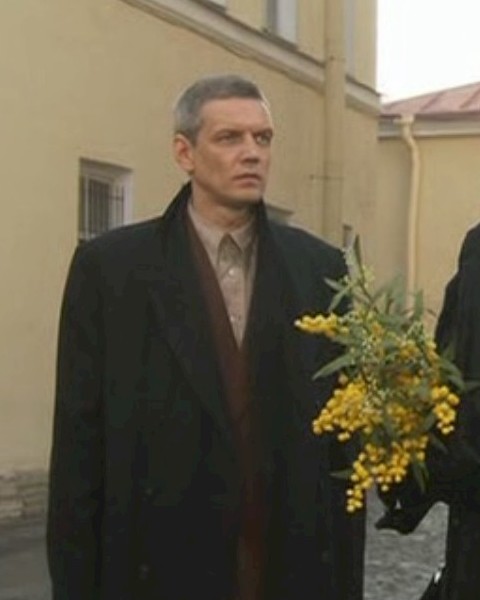
Александр Галибин в роли мастера (2005)
Prototype
The most obvious prototype for the master is Bulgakov himself, while the character Margarita is based on Bulgakov's third wife, Elena Sergeevna Shilovskaya (1893-1970), born Nyurenberg. It is only in chapter 13 that we are intrduced to the master, a man of 38 years old. That was also Mikhail Bulgakov's age when he started writing The Master and Margarita.
The novel of the master has been subject to a lot of opposition because it was dealing with a religious subject, focusing on the inner struggle which Pontius Pilate, according to many evangelists, has had when he was meeting with Yeshua Ha-Notsri, which is the Aramaic name for Jesus of Nazareth. The novel of the master would never be published, just as The Master and Margarita, a «book about the devil», would never be published during Bulgakov's life. The criticism on the master's novel is a reflection of the fierce press campaigns that were conducted against Bulgakov's own works as The Fatal Eggs and The White Guard, and against his plays, especially The Flight.
In Bulgakov's archive have been found some excerpts from the newspaper Raboshaya Moskva, including an article written by the critic Aleksander Robertovich Krips (1892-1938), who used to write under the pseudonym Aleksander Robertovich Orlinsky, in which he argued: «We will strike and fight against Bulgakovism!». Bulgakov paraphrases this attack on him in The Master and Margarita when he writes that the critic Lavrovich launched a call to «strike and fight against Pilatism».
Bulgakov kept a close watch on how often he was attacked in the press. In his letter to the Soviet authorities in 1930 he wrote that, in ten years of writing, he had read 301 articles about himself «Из них: похвальных - было 3, враждебно-ругательных - 298» or «3 of them were laudatory and 298 hostile and abusive». His plays were almost all forbidden.
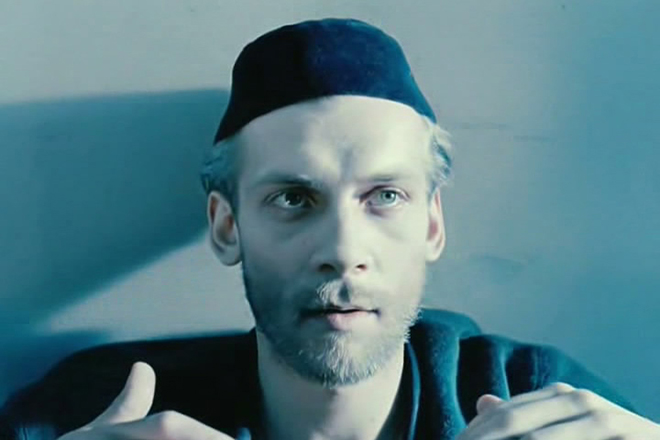
Виктор Раков в роли мастера (1994)
In the novel it is not clearly explained why and how the master got into the psychiatric hospital. Did the writer forget to mention it? Or is it due to the lack of a final edition? Probably none of both. We may suppose that Bulgakov wanted to reflect the practices of the Soviet authorities in his days with an intentional lack of clarity. When someone «disappeared», he was often arrested by the secret police, and the authorities always reacted in a vague, impersonal and furtive way.
The Master and Margarita has got lots of references which connect the character of the master with Bulgakov himself. The basement where the master writes his novel perfectly matches the small house of the brothers Sergey and Vladimir Topleninov in Mansurovsky pereulok 9 in Moscow, where Bulgakov liked to come and where he also worked on The Master and Margarita. And the character of Margarita does not appear in the novel until 1929, shortly after Mikhail Boulgakov met Elena Sergeevna in real life. Incidentally, this meeting took place in the Bolshoy Gnezdnikovsky pereulok 10, «a side street of Tverskaya» where the master and Margarita also meet for the first time.
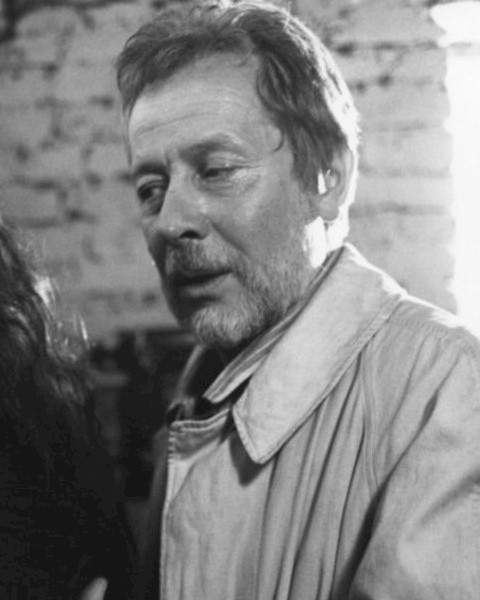
Владыслав Ковальский в роли мастера (1990)
In Bulgakov's early versions of The Master and Margarita, the role of the master was somewhat different The character was called Fesiya, and he was a wise man who was interested in the devilry from the Middle Ages and the Italian Renaissance. Fesiya was occupied with demonic powers, much more than the master in later versions of the novel, he was much closer to the Faust of Johann Wolfgang von Goethe (1749-1832). Fesiya was probably inspired by the philosopher Pavel Alexandrovich Florensky (1882-1937), who was arrested in 1928 and exiled to Nizhny Novgorod. He was shot on the night of December 8, 1937.
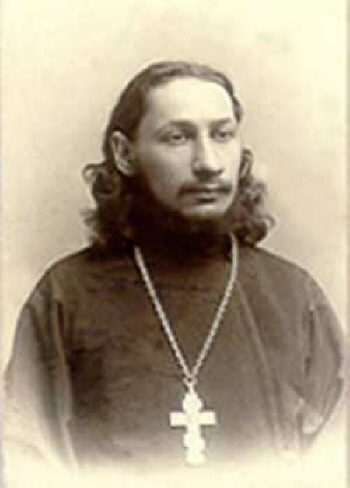
Павел Александрович Флоренский
More background information
Many people referring to the character of the master would write «Master», with a capital «M», as if it were a proper name. But that is contrary to the spirit of the novel, because the master has renounced his name. In the original text of Bulgakov himself we read «мастер» [master] all along, with a lowercase «м». For in Russia it is customary, still today, to use the description «master» for a professional, for someone who, like the masters in the guilds and crafts from the Middle Ages, has achieved a high degree of skills in his work, with an excellent knowledge of his profession.
So, the master has renounced his name. That did not stop director Aleksandar Petrović from giving him a name in his 1972 film Il maestro e Margherita. In that film, the master introduces himself as Nikolay Afanasievich Maksudov. Maksudov is the main character from Bulgakov's unfinished autobiographical novel Black Snow. Other titles of this book are Theatrical Novel and A Dead Man's Memoir. Director Vladimir Bortko also referred to this name in his TV series Master i Margarita from 2005. When Behemoth returns the manuscript of the novel about Pilatus to the master after the ball, we see a glimpse of the front page on which the name Nikolay Afanasievich Maksudov appears.
The reaction of the master to the critiques in the press also reminds of the writer Nikolay Vasilevich Gogol (1809-1852). The master burned his manuscript about Pilate, Bulgakov burned his manuscript of The Hoof of the Engineer, one of the first versions of The Master and Margarita, on March 18, 1930, and Gogol burned the second part of Dead Souls on February 12, 1852. Bulgakov admired Gogol. He has adapted his Dead Souls for stage. In a letter to his friend Pavel Sergeevich Popov (1892-1964), Bulgakov wrote on April 24, 1932: «The stove long ago became my favourite editor».
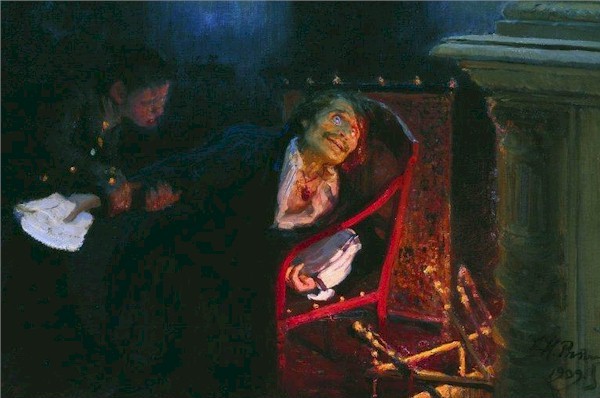
Гоголь сжигает рукопись Мертвых душ
The self-willed Ukrainean polemicist Alfred Nikolaevich Barkov (1941-2004) argued that not Bulgakov, but rather the Russian author Maxim Gorky (1868-1936) was the master's prototype. According to Barkov, Bulgakov himself would heve been the prototype of Ivan Bezdomny.




